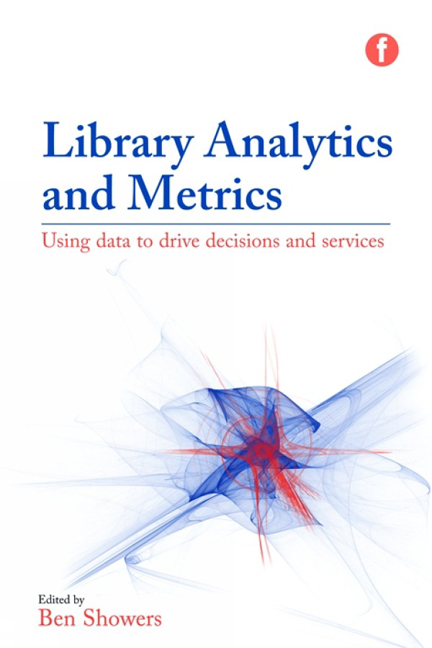Book contents
- Frontmatter
- Dedication
- Contents
- List of figures and tables
- Contributors
- Acknowledgements
- Introduction: getting the measure of analytics and metrics
- 1 Library data: big and small
- 2 Data-driven collections management
- 3 Using data to demonstrate library impact and value
- 4 Going beyond the numbers: using qualitative research to transform the library user's experience
- 5 Web and social media metrics for the cultural heritage sector
- 6 Understanding and managing the risks of analytics
- 7 Conclusion: towards a data-driven future?
- Index
6 - Understanding and managing the risks of analytics
Published online by Cambridge University Press: 09 June 2018
- Frontmatter
- Dedication
- Contents
- List of figures and tables
- Contributors
- Acknowledgements
- Introduction: getting the measure of analytics and metrics
- 1 Library data: big and small
- 2 Data-driven collections management
- 3 Using data to demonstrate library impact and value
- 4 Going beyond the numbers: using qualitative research to transform the library user's experience
- 5 Web and social media metrics for the cultural heritage sector
- 6 Understanding and managing the risks of analytics
- 7 Conclusion: towards a data-driven future?
- Index
Summary
Chapter overview
This chapter brings us close to the end of the book. Yet, we shouldn't confuse its position at the end with any suggestion that it is unimportant or an afterthought. Rather, this is possibly the most important chapter of the book, necessarily following the discussions of how analytics can transform services and collections, and acknowledging that in a relatively new area like analytics, this is less of an ending and more of a beginning.
This chapter provides a single case study exploring the legal and ethical risks that institutions will face in using analytics. The case study offers an overview of the current legal and ethical landscape, providing links to relevant resources and beginning to outline a code of conduct for institutions utilizing data analytics.
• CASE STUDY 6.1 Chowcat, I., Kay, D. and Korn, N., The legal, risk and ethical aspects of analytics (p. 157)
Before we explore the case study and its analysis of the legal and ethical risks for institutions exploiting data and analytics, it's worth briefly reflecting on the multi-faceted and nuanced challenges of privacy and data protection, for libraries in particular.
Redrawing the boundaries of privacy
In exploring the implications of the social sharing of content, Eric Hellman (2014) notes the traditional role of the library as a ‘haven of privacy’, where it is not unheard-of for librarians to go to jail for refusing to provide user records to the authorities (Cowan, 2006 provides a 21st-century example from the US). But, without giving much thought to it, libraries are actively engaging with and encouraging the use of social-media widgets and sharing buttons (Facebook's ‘Like’ button probably being the most ubiquitous of all socialsharing widgets). Hellman makes it clear that the use of these widgets and web analytics tools has ‘the cumulative effect… that website users can be pretty comprehensively tracked, and if need be, identified, whether they like it or not. In exchange for deploying the trackers, websites get access to the valuable pool of information about their users’ (Hellman, 2014). The difficulty for libraries and cultural heritage institutions is that protecting the privacy of users is no longer responding against a clear and well defined threat. Indeed, it may even be perceived as an improved service or better user experience.
- Type
- Chapter
- Information
- Library Analytics and MetricsUsing Data to Drive Decisions and Services, pp. 153 - 168Publisher: FacetPrint publication year: 2015



